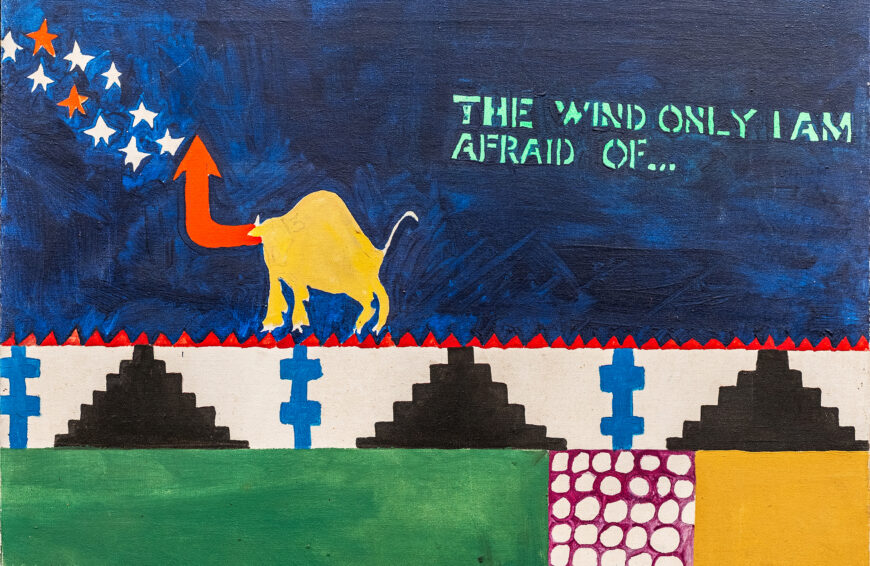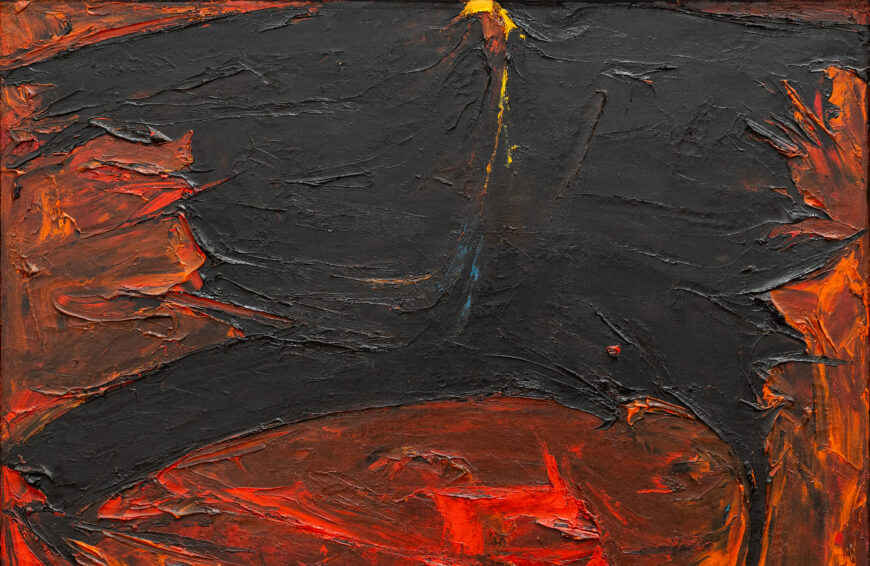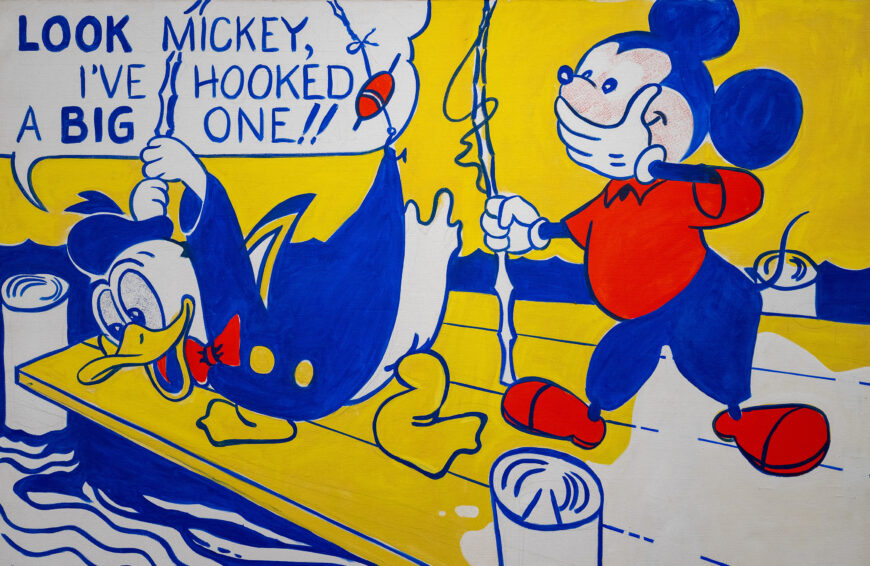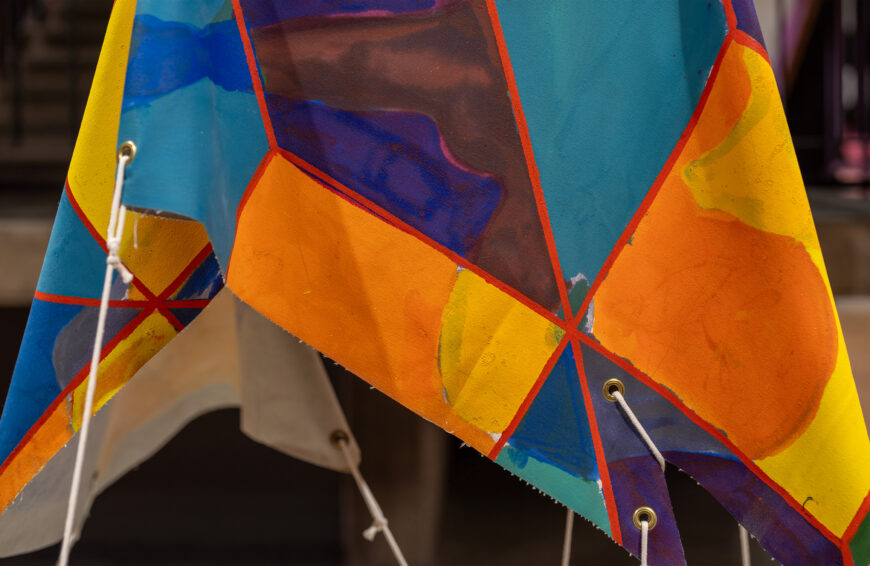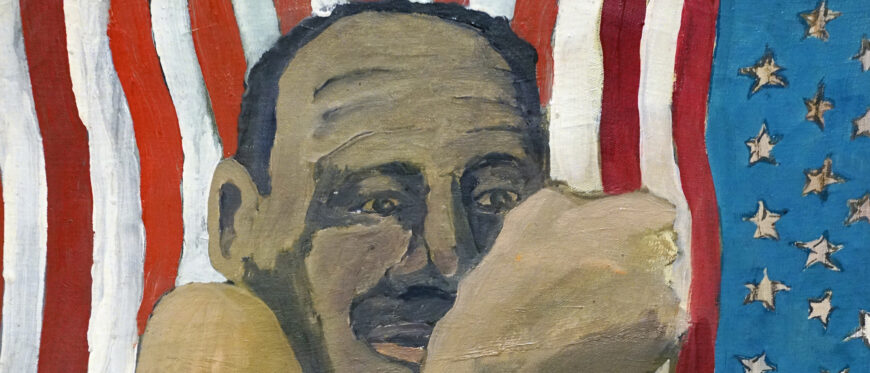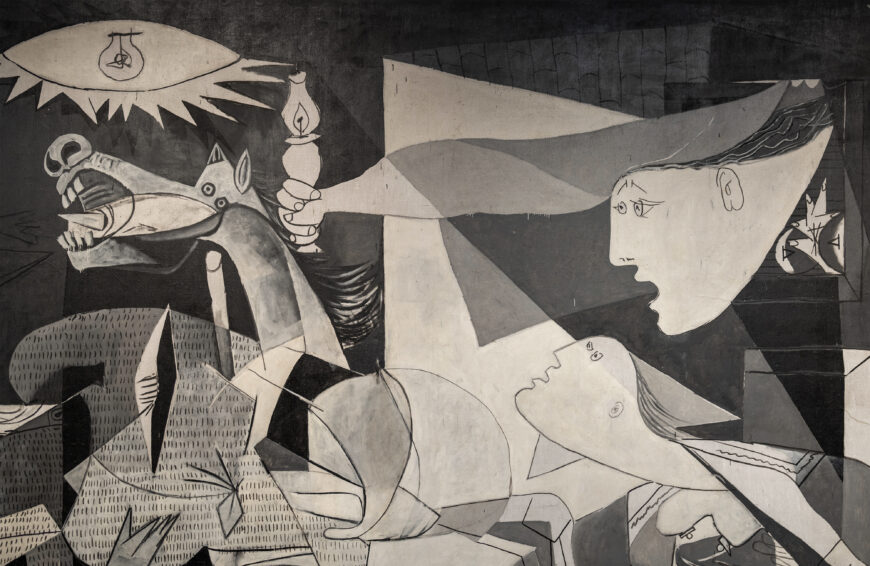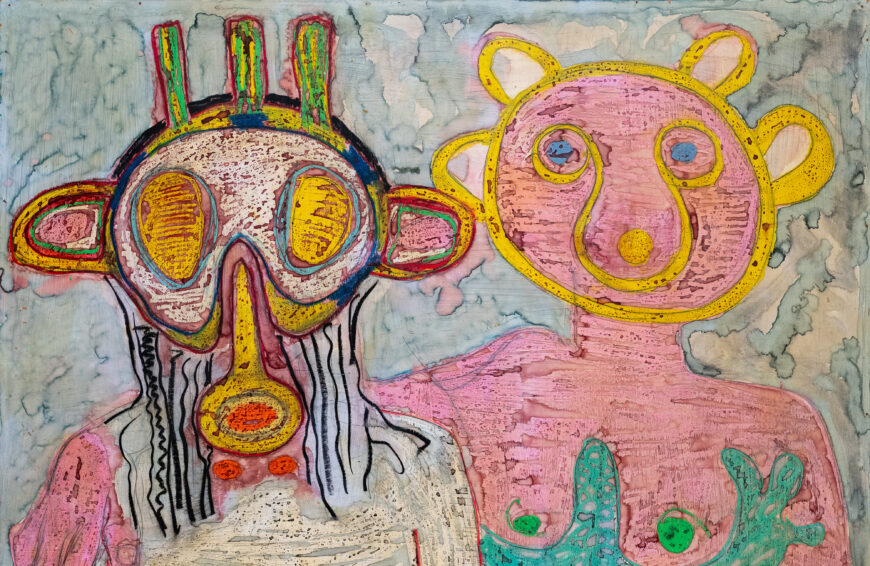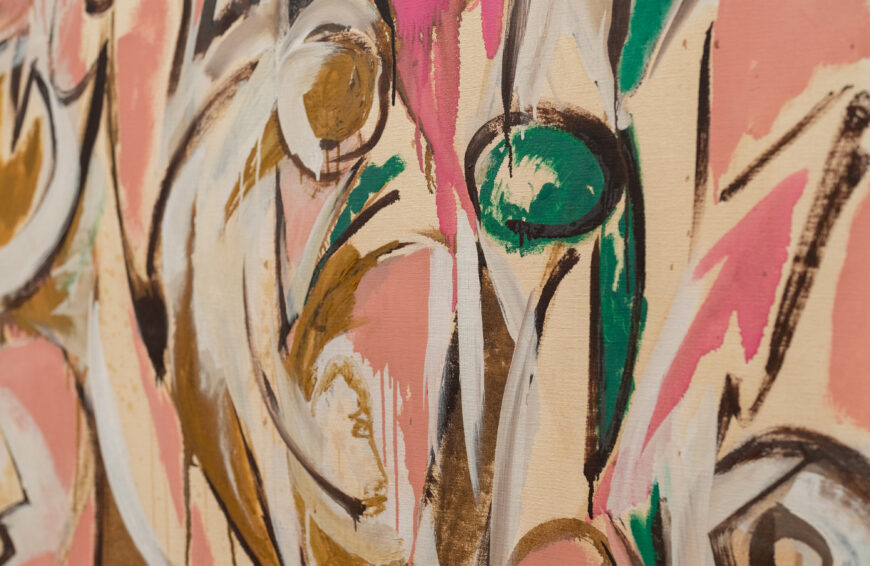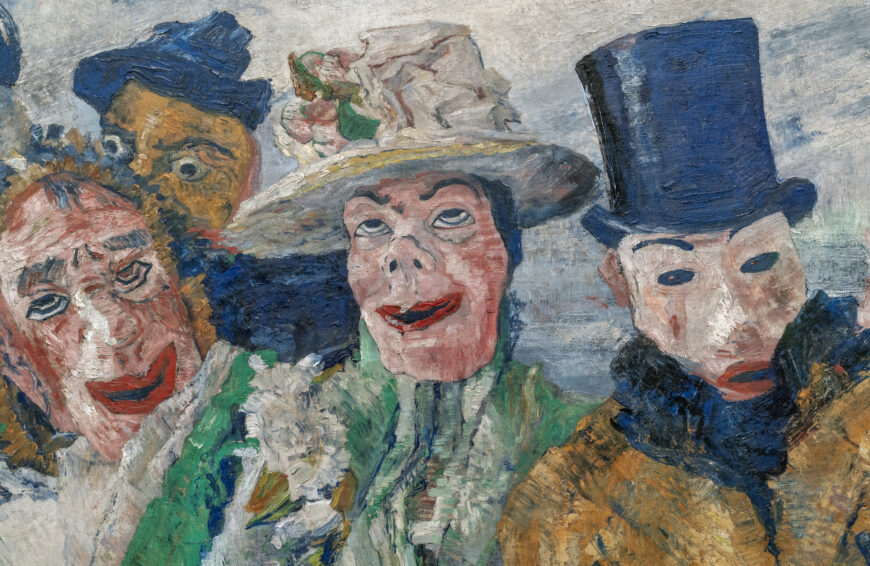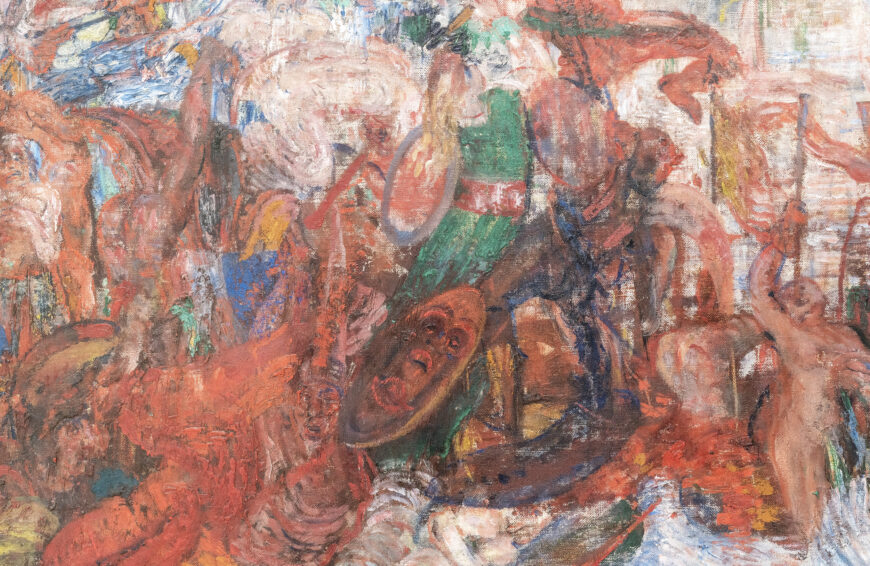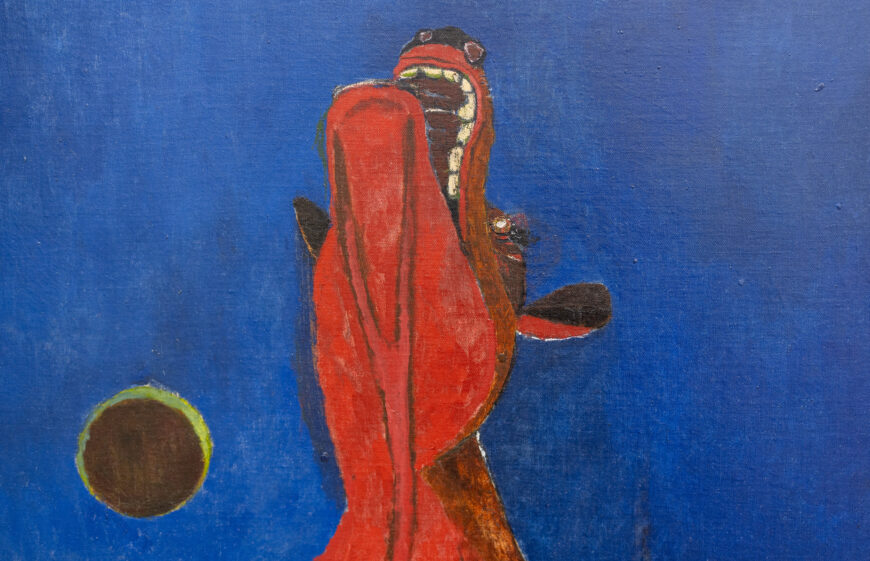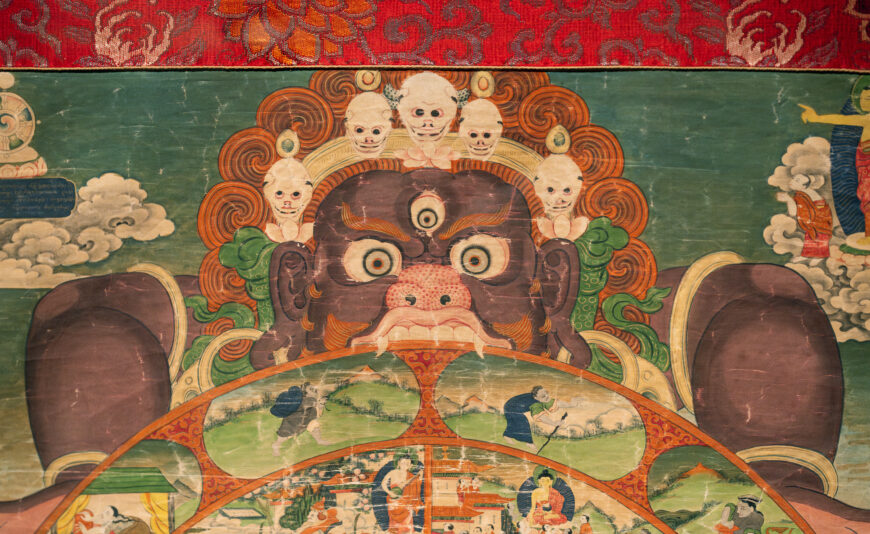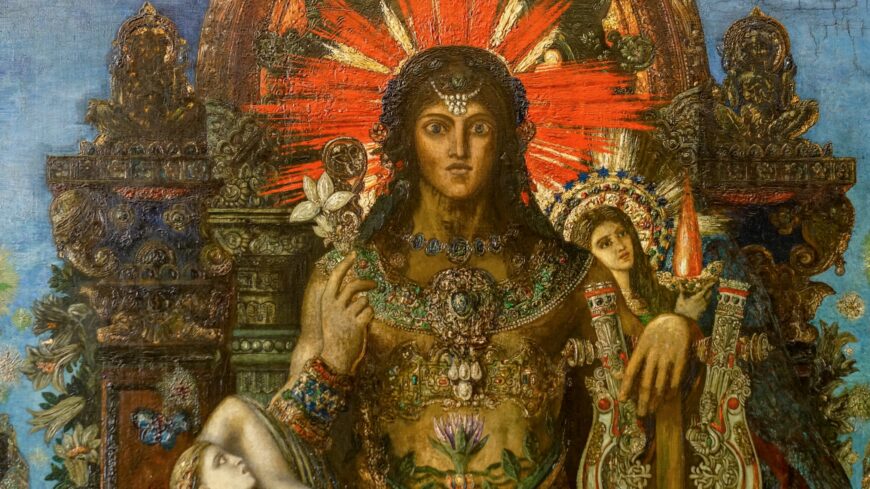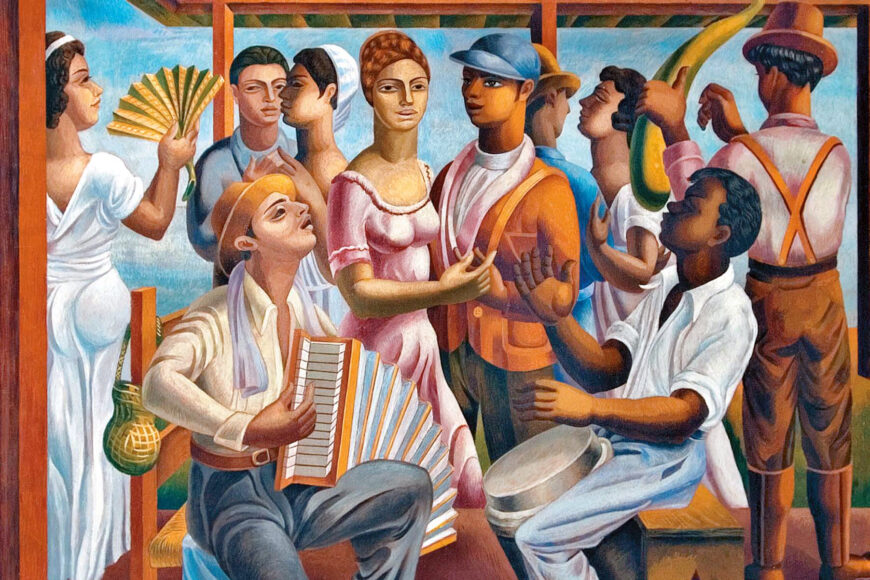Henry Ossawa Tanner, The Good Shepherd, 1917, oil on canvas, 25-1/2 x 32 inches (Crystal Bridges Museum of American Art)
Henry Ossawa Tanner, The Good Shepherd
[0:00] [music]
Dr. Beth Harris: [0:06] We’re in Crystal Bridges Museum of American Art and we’re looking at a beautiful painting by Henry Ossawa Tanner called “The Good Shepherd.” This dates to 1917, so we’re toward the end of the First World War.
[0:18] Tanner is an artist who reached the pinnacle of success in the art world.
Dr. Mindy Besaw: [0:23] He’s exhibiting across Paris, winning awards, being recognized for this modern spirit given to religious subjects. Tanner stayed true to biblical subjects as the primary subject matter for his work.
Dr. Harris: [0:40] He was a deeply religious man. It’s partly from his family life. His father was a reverend in the African Methodist Episcopal Church. Although early in his career he did genre scenes with Black figures, he did spend most of his career painting biblical subjects.
[0:57] But this is not a painting of Christ telling the Parable of the Good Shepherd. This is the idea of humanity as a flock of sheep who are in need of guidance, who are in need of protection, and Christ as the one who is willing to give his life for his sheep and to protect them and not abandon them.
[1:19] That story is told here with such minimal means, and yet it comes across so strongly, the figure with his head slightly bowed, looking down at his sheep, the sheep who nuzzles close to him in a sweet and affectionate way. That makes us feel, I think, the importance of the divine for human beings.
[1:43] The interest in color harmonies remove this from the everyday world so that we know that we’re looking at something that is visionary.
Dr. Besaw: [1:52] We have blues and purples and greens. The way that Tanner captured almost that blinding light of midday that doesn’t even have many shadows, pooling around the figures or this vast flock of sheep behind him or the donkey that’s right next to him.
Dr. Harris: [2:12] That might be what he saw when he visited what he understood as the Holy Land in the Middle East and North Africa. Bringing an authenticity to these biblical scenes was important to him.
Dr. Besaw: [2:24] There’s also something about the importance of this message at this time, when Europe is attempting to pull itself back together. Tanner is in France. He’s seeing the effects of World War I, so I think that’s an important context from which to see this otherworldliness.
Dr. Harris: [2:45] And bringing these biblical scenes into the modern world. I mean, this doesn’t look like the modern world, but this is a modern way of painting. The figure doesn’t wear a halo. We can’t see his features. It’s not painted in that traditional academic way, but in a way that’s loose.
[3:01] This open brushwork that’s been informed by Impressionism, turning away from realism of Impressionism to something more dreamlike and visionary.
Dr. Besaw: [3:12] Henry Ossawa Tanner is trained in Paris, but even before that, he does attend the Pennsylvania Academy of Fine Arts. He studies with Thomas Eakins. The racism in the United States at the time is too much, and he finds much more artistic freedom in Paris.
Dr. Harris: [3:29] In fact, he returns home to Philadelphia and to the United States a couple of times, but resolves to go back and stay because of the racism. Essentially, every time he’s mentioned in the American press, it’s always, “Henry Ossawa Tanner, the Negro painter.”
[3:46] Of course, being an African American is part of his heritage, he was born just years before the Civil War. His father was a freedman. His mother had been freed from slavery when she was young. This is an important part of his heritage, but it’s not all of what he was.
[4:04] When you read Tanner’s biography, you feel this pressure that was placed on him to represent his race. That was the term that was used. He was so successful that he was understood to prove that African Americans, formerly enslaved people, could be cultured, could be great artists, which was held to be the realm of white people.
[4:28] Instead of continuing his early interest in genre painting, in scenes of everyday life of African Americans, this need that was put on him to represent his race, he doesn’t do that.
[4:39] He is a deeply religious man who holds true to his faith and using his art to express that and to bring a deep humanity and feeling to his audience.
Dr. Besaw: [4:52] Tanner says, “My effort has been to not only put the Biblical incident in the original setting, but at the same time, give the human touch, which makes the whole world kin, and which ever remains the same.”
[5:05] [music]
| Title | The Good Shepherd |
| Artist(s) | Henry Ossawa Tanner |
| Dates | 1917 |
| Places | North America / United States |
| Period, Culture, Style | Modernisms / Symbolism |
| Artwork Type | Painting |
| Material | Oil paint, Canvas |
| Technique |
Loading Flickr images...


